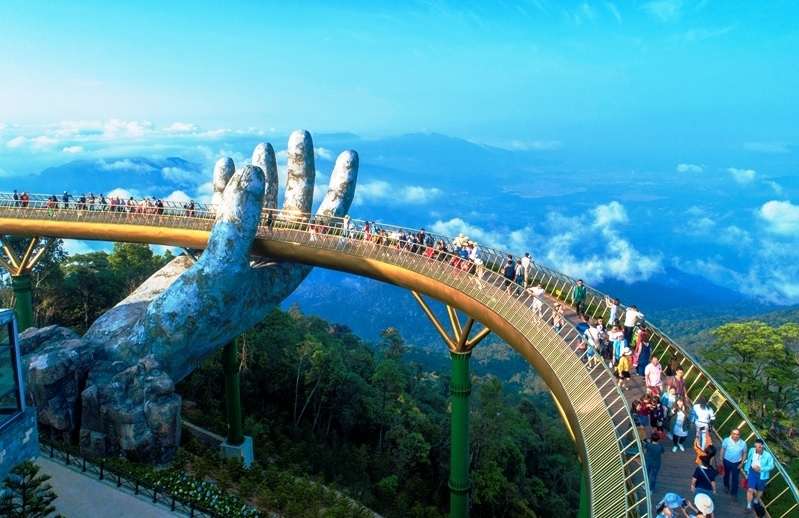The article is a detail understanding along with examples of different Various Tourism Approaches as per UGC NET syllabus.
Institutional Approach
The approach can be better understood through the example. A destination’s major stakeholders are travel operators and hotel owners who offer interaction between tourism products, and tourism attractions of a destination to the visitors and tourists.
This method requires an awareness of and analysis of the institutions carrying out their responsibilities. To put it another way, the institutional approach looks at the structure, procedures, issues, expenses, and financial standing of middlemen like travel agencies and tour operators. These individuals make purchases from hotels, airlines, and other businesses on behalf of their clients. This strategy has gained more relevance in the tourist industry as it is a sector where intermediaries play a highly prominent role.
Product Approach
The approach can be better understood through the example. A cultural destination offer tourism products like forts, monuments, religious sites, cultural festivals, the cultural lifestyle of residents which makes the overall look of the destination very authentic and unique to the travelers.
The study of the many tourist goods and their production, marketing, and consumption processes is the main component of this method. This method takes into account the modes of production, marketing, distribution, and consumption. We use this technique to research tourism, but you may also study and analyze issues related to the goods in tourism, their supply and production circumstances, the type and volume of demand, distribution channels, consumption patterns, etc. When researching a tourist attraction, for example, we may examine the development process, financing methods, development with sustainability in mind, and marketing and distribution strategies used to promote the attraction to visitors.
Historical Approach
The approach can be better understood through the example. A popular destination in the 80s has been going through major changes to date to stay relevant and in demand.
In the case of tourism also, the evolution happened over the years, but the history of modern tourism, particularly mass tourism, is rather short, comparatively which makes this approach less relevant for tourism studies. The historical approach in tourism involves an analysis of tourism activities and institutions from historical angle, through different stages of their evolution. The stages of evolution will be analysed, the causes of innovations will be examined, changes in demand patters are scrutinized and shifts in interest will be analysed to understand the nuances of the evolution of tourism.
Managerial Approach
Management is involved in tourism at both the destination and institutional levels. Making the correct decisions is the most important part of managing, and the management approach focuses primarily on how managers address certain issues and circumstances. Organizing functions is part of managing an organization. The four main tasks that managers must complete as part of the management process are organizing, leading, regulating, and planning. The managerial role includes a wide range of auxiliary tasks, such as market research and marketing. Under them, each of those likewise involves many functions. The managerial mindset was imposed on these roles.
Economical Approach
The approach can be better understood through the example. Tourism gives a opportunity to increase daily life income of many residents by indulging into tourism friendly activities like homestays.
Tourism has a significant impact on the local economies of the places it visits, both directly and indirectly, as well as through induced impacts. This industry creates jobs in big numbers, brings in foreign exchange, and provides opportunities for individuals from all walks of life to earn a living. All of these financial gains are a direct outcome of the money that visitors spend. In an area, tourists boost sales, earnings, jobs, tax receipts, and income. The main tourism industries—lodging, dining, transportation, entertainment, and retail—are directly involved. This generates many cycles of spending that permeate the economy further. Therefore, the majority of economic sectors are impacted by tourism through secondary impacts.
Sociological approach
The approach can be better understood through the example. Stakeholders when got in collaboration leads to a successful global festival and has gained popularity and increase in visitations in Pushkar, Rajasthan.
It has been said rather well that tourism is a social activity of great importance. The social relevance of tourism is effectively created by the migration of individuals from one location and their interactions with those in another location as well as members of the host community. It goes without saying that industry experts must communicate with tourists. Additionally, a certain level of engagement with local community members.
Numerous social effects and advantages are produced by tourism. Additionally, their interactions may have long-term effects on society. Over time, intense engagement with visitors has the potential to alter the nature, traits, and behaviors of the local population.
Geographical approach
The complex link that exists between tourism and geography is the reason why the geographic approach to tourism is so popular. A significant component of tourism studies is the spatial dimensions of tourism. Even while we examine tourism from a geographic standpoint, we might also need to carefully consider approaches to researching how people move when they travel; how visitors and locals interact; how the climate affects the area; how natural resources relate to tourism; how the destination is developed physically; how much space it can accommodate; and how tourism affects the area’s natural beauty and sociocultural fabric.
System Approach
Tourism is as a system. It implies that many components are required. Yes, there are components, including those related to tourism, industry, geography, and the like. Every element is linked to every other element. The way one performs might influence the other. There might have an effect on the entire system if one is not working. For instance, in the case of tourism, destinations and other related industries may suffer greatly if the aviation sector is not operating. These kinds of systems typically appear in various situations. Numerous micro and macro environments surround tourism. The performance of tourism is impacted in some way by the business, political, technical, and economic settings.
Interdisciplinary Approach
The interdisciplinary method examines, integrates, and harmonizes the relationships among several fields of study to create a cohesive and well-coordinated whole. It will involve the dynamic interplay of two or more disciplines, which will be helpful in defining, analyzing, and comprehending the diversity and complexity of the tourist phenomena. This takes into account a theoretical and/or practical issue related to the tourist phenomena from several disciplinary viewpoints, rather than just one. The field of tourism has arisen from a variety of disciplines, the majority of which have been combined to make it. This is the aim of the multidisciplinary approach, which involves interdisciplinary collaboration and integration.

Cost-Benefit and Environmental Approach
The “costs” associated with the entire process are contrasted with the “benefits” of development or investment. To get a critical understanding of tourism, the advantages of travel, its planning, and development are totaled, and the expenses related to those activities are then deducted. The expenses might include the money spent, the effects produced, etc. This method is useful for determining whether tourism is a phenomenon that should be developed in a certain area or location.
Also Read
- What is Tourism Measurement and Tourism Indicators
- What are the Various Tourism Approaches
- Early and Medieval Age of travel, Travel during Renaissance and Mass Tourism
- Important Definitions on Tourism and related Terminologies
When it comes to the environmental approach, the function of tourism is seen via an environmental lens. Tourism and the environment certainly have a symbiotic relationship—one that may become harmful once growth reaches a certain level, for example—but they also have important relationships that coexist. This method covers the environment’s role in tourism as well as related topics in great depth. Furthermore, the extensive ramifications are also examined. Unplanned tourist growth has the potential to seriously upset the natural equilibrium and have an influence on the ecosystem; these factors are becoming more and more important in the study of tourism.


